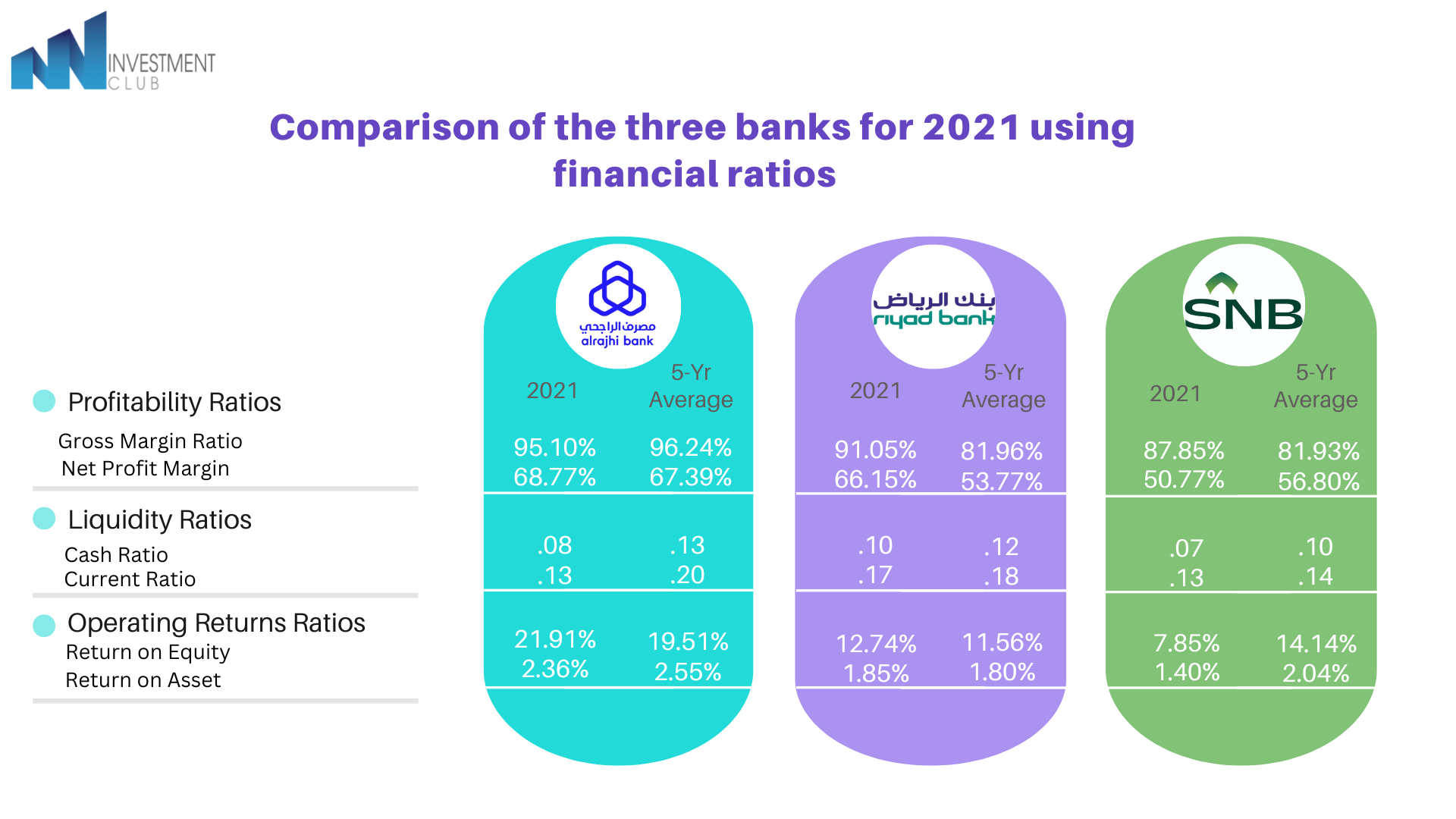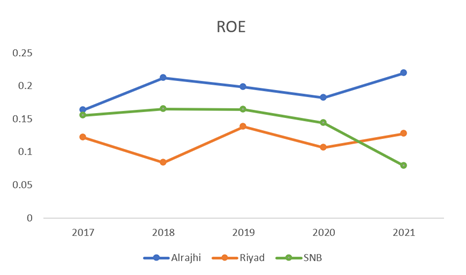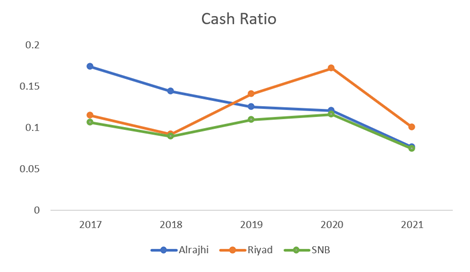The Banking Industry

The banking sector consists of financial institutions that accept cash deposits and engage in the lending process in the capital market.
The total assets of banks globally amounted to 678.1 trillion Saudi riyals. This value has nearly tripled compared to the beginning of the millennium. This is important, especially if we take into account that the financial sector has experienced a major crisis in the meantime.
The financial sector in the Gulf Cooperation Council region also grew during this period, with assets of commercial banks worth 7.5 trillion Saudi riyals and a total of 573 billion non-banking institutions.
The value of shares traded among the 12 leading commercial banks in the traditional capital markets in the Kingdom of Saudi Arabia amounted to about 195 billion Saudi riyals. The SNB Bank alone achieved nearly 10 billion Saudi riyals in its stock trading.
Commercial banks in Saudi Arabia generate about 70% of their revenues through net special commissions. Nearly 60% of their loans are given to businesses and only 24% to consumers. Mortgages make up only 16% of this business.
In the Arab region, the ratio of private sector credits to total deposits is on average around 69%. While the leading commercial banks in Saudi Arabia operate on a loan-to-deposit ratio of 93.5%.
The monetary and banking sector in the Kingdom of Saudi Arabia has witnessed huge developments in the past five years as a result of progress and continuous and rapid changes in many areas, including technology, communications, computer programs, and the great competition in diversifying and providing financial and banking services.
The Saudi banking sector also enjoys good flexibility, which is supported by large reserves and strong liquidity. And the banking sector's financing situation will remain positive due to the increase in oil prices, which is reflected well in government finances and thus in the growth of bank deposits.
By the end of May 2022, the total monetary mass reached 2.38 trillion Saudi riyals, an increase of 7.8% on an annual basis. This was Driven by the growth of time and savings deposits, which accelerated by 21.3% year-on-year last May to reach SAR 517.4 billion, benefiting from the trend of rising interest rates. Other quasi-cash deposits also jumped by 17.8% y/y in May to reach SAR297.7 billion, due to an increase in deposits against opening documentary credits with improved import activity. As for demand deposits, which are interest-free accounts and represent about 62.5% of total deposits, they grew by 2.9% on an annual basis to reach 1.363 trillion Saudi riyals in May 2022, and therefore they provide Saudi banks with high levels of liquidity at a low cost that enables them to expand in providing credit to companies and individuals.
A boom in innovative banking technologies is redefining the banking sector as a result of consumers' rising demand to obtain financial services through digital channels.
Technology is influencing practically every facet of the banking sector, from retail and mobile banking to start-up neobanks, and it will continue to do so as banking moves toward a digital future.
Retail banks are introducing platforms in the Banking-as-a-Service (BaaS) sector to stay competitive. Meanwhile, mobile banking has cemented its status as a tool that financial institutions must offer to be competitive, especially with the technologically aware millennials and Gen z.
As a significant difference for banking leaders, mobile banking has emerged as the preferred means for consumers to make deposits, account transfers, and track their spending and profits. Mobile banking is the primary method of access for over 80% of survey participants who have used it.
Since the start of the coronavirus epidemic, respondents are more likely to pick a bank based on mobile capabilities than they were the previous year. Financial institutions should know which mobile banking services customers find most valuable and how they compare to their rivals so they can focus on the areas that need the greatest improvement.
Security is still the top issue for customers when using mobile banking. The need for services that protect user data grows as data breaches become more likely.
Neobanks, or digital-only banks, are altering the future of banking globally. High regulatory obstacles caused the neobank industry to get off to a poor start, but recent developments and the easing of rules indicate that the sector is about to take off. Examples of some neobanks in Saudi Arabia are Bunq, Everestcard, Wise (Transferwise), and Revolut.
According to a 2020 Insider Intelligence study of banking executives, 66% of respondents think that by 2025, emerging technologies like blockchain, AI, and the Internet of Things (IoT) would have the most influence on banking.
In this report, we analyzed the profitability, liquidity, and operating returns of three banks from the Saudi market, Saudi National Bank, Al Rajhi Bank, and Riyad Bank, using financial indicators.
We used the gross profit margin ratio and net profit margin ratio to measure a company's profitability, the cash ratio, and the current ratio to measure the company's liquidity, and finally the return on equity and return on assets to measure operating returns.
Here we will review the concept of each of these ratios:
Gross margin: A financial metric that compares gross sales of a good or service to the cost of producing or providing that good. Cost includes any costs directly associated with producing a good or providing a service.
Net profit margin: used to determine what percentage of a company's total sales is profit. It measures how much net profit a business makes for every riyal of revenue generated.
Current ratio: Evaluates a company's ability to fulfill short-term or annual obligations. It explains to investors and analysts how a business can use its current assets to the highest possible extent to pay down its current liabilities and other payables.
Cash ratio: Compares the most liquid assets of a firm to its current liabilities. It determines the ratio of current obligations to total cash and cash equivalents held by a corporation. The indicator assesses a firm’s capability to pay off its short-term debt with cash or resources that can be converted into cash quickly, including easily tradable securities.
ROE: The ratio of a company's net income (annual return) to the value of its total shareholders' equity. To put it in other words, it shows how much profit a business generated in relation to the total amount of shareholders' equity.
ROA: It shows a company's profitability in relation to its total assets. hence, how effectively a business generates profits using the assets it owns.
This table shows a 2021 comparison between the three banks:



Since 2018, the current and cash ratios have been steadily decreasing, indicating that Alahli Bank's liquidity has deteriorated. This is a problem because cash only covers 7% of its debt obligations. Over the years, it has been less liquid than Alrajhi and Riyad Bank.
Alahli Bank's gross margin has been increasing while its profit margin has been decreasing in recent years, indicating higher revenues but lower profits. Furthermore, when compared to Alrajhi and Riyad Bank, it has the lowest profitability.
Its operating returns have dropped to their lowest level in the last five years, but its ROA is lower than the 5-year average. When compared to Alrajhi and Riyad Bank, its operating returns in terms of ROE and ROA are the lowest.
Although the current and cash ratios decreased by over 5% and 7% respectively, Riyad Bank still holds the highest liquidity ratios compared to SNB and Alrajhi Bank, with 10% of its debt obligations covered by its cash.
With the highest gross margin and net profit margin over the previous five years, Riyad Bank has demonstrated the biggest improvement in profitability in 2021, outperforming SNB but not Alrajhi Bank. According to its records, less than 9% of its revenues are spent to fund operating costs.
Additionally, it now has operating returns that are slightly above its five-year average in terms of ROE and ROA, putting it between SNB and Alrajhi Bank.
The current ratio and cash ratio have been in a continuous decrease since 2018 which signals for a worsened liquidity for Alrajhi Bank. This is an issue since only 8% of its debt obligations is covered by cash. It has been more liquid than SNB but less liquid than Riyad Bank over the years.
Alrajhi Bank has been decreasing in gross margin but increasing in profit margin relative to the previous couple of years, which signals less revenues comparative to its operating expenses but relatively higher profits. Moreover, it has the highest profitability compared to SNB and Riyad Bank.
Its operating returns have increased to its highest ROE within the last 5 years; however, its ROA is less than its 5-year average. Its operating returns in terms of ROE and ROA are the highest compared to SNB and Riyad Bank.
To see the full analysis, click here.
Resources:
- CFI -
https://www.statista.com/topics/5315/banking-industry-in-saudi-arabia/#topicHeader__wrapper
Done By:
Sara Alotaibi
Joud Alfadhel
Noura Alfulij
Wjood Alsayegh
Yasmin Zeidan